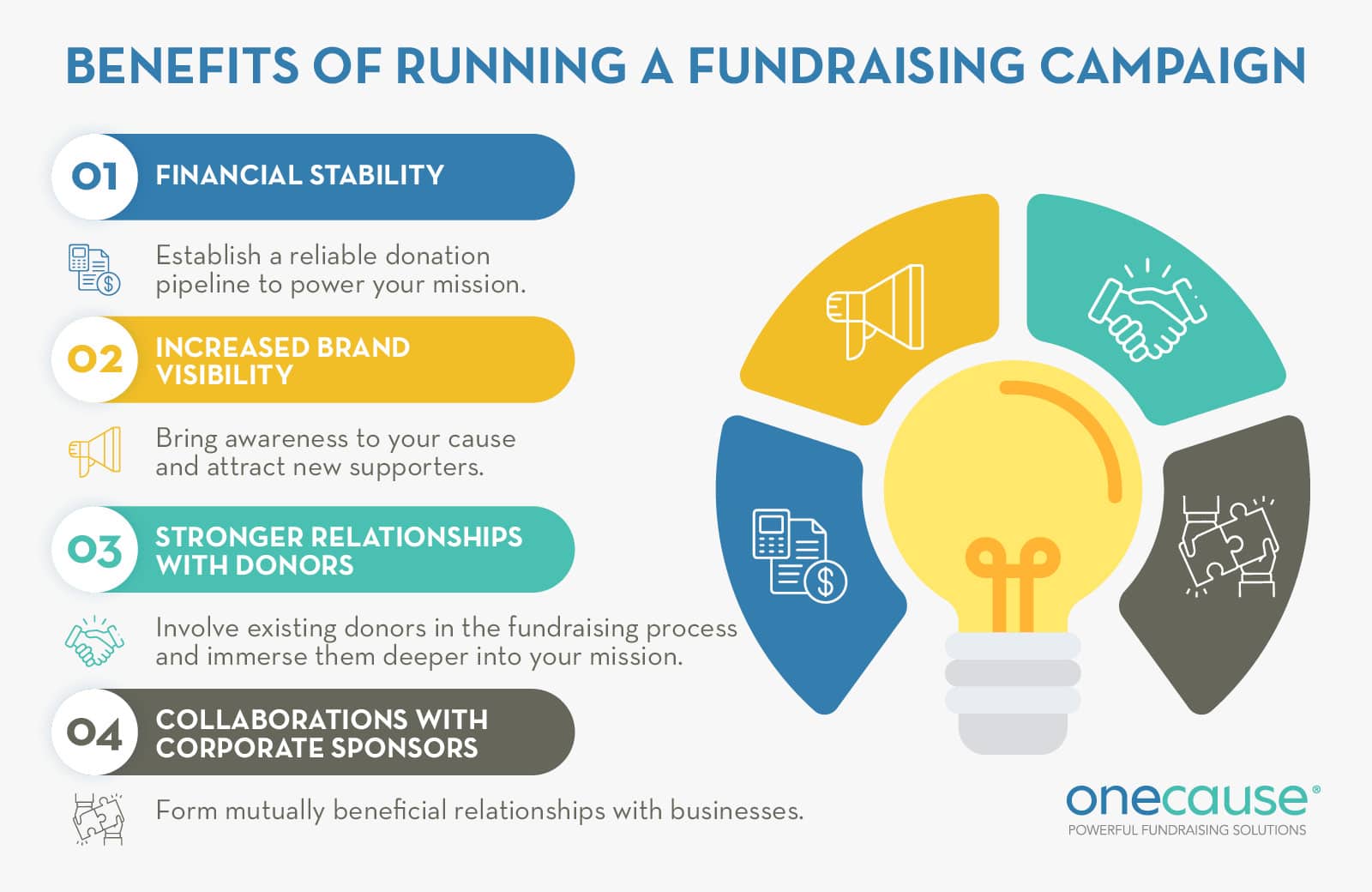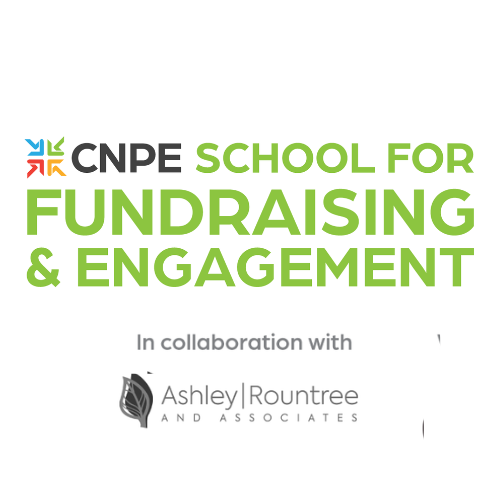Imaginative Nonprofit Fundraising Ideas: Increase Donations and Engagement
Imaginative Nonprofit Fundraising Ideas: Increase Donations and Engagement
Blog Article
The Duty of Community Interaction in Nonprofit Fundraising: Structure Lasting Relationships for Lasting Support
Community involvement is progressively identified as a vital component of effective not-for-profit fundraising. By cultivating genuine partnerships with local stakeholders, organizations can grow trust fund and loyalty, which are vital for lasting support. Nevertheless, the techniques and techniques used to involve neighborhoods differ commonly, elevating essential concerns regarding effectiveness and impact. What are the most effective methods for growing these important links, and just how can nonprofits determine their success in this field? Recognizing these characteristics could significantly affect the future of fundraising efforts and the overall mission of not-for-profit companies.
Recognizing Neighborhood Engagement
Community involvement is a vital part of effective not-for-profit fundraising initiatives. It refers to the methods and activities that companies use to get in touch with their regional communities, promoting partnerships that are mutually useful. Comprehending neighborhood involvement includes recognizing its diverse nature, that includes cooperation, engagement, and outreach. Nonprofits should identify essential stakeholders-- such as neighborhood members, local organizations, and various other organizations-- to create efficient involvement techniques.
Reliable area interaction is asserted on energetic listening and responsiveness to the needs and passions of the area. This procedure includes soliciting responses, comprehending neighborhood dynamics, and ensuring that the company's goal lines up with regional top priorities. Involving the area can take numerous types, consisting of public conferences, volunteer possibilities, and collaboration campaigns, each developed to encourage participation and financial investment in the company's objectives.
Additionally, community interaction ought to be approached as a recurring dialogue as opposed to a single initiative. By cultivating a comprehensive environment where area voices are heard and valued, nonprofits can construct a strong structure for future fundraising ventures. Eventually, a deep understanding of neighborhood involvement equips organizations to develop genuine connections that improve their overall effectiveness and sustainability.
Advantages of Strong Relationships
Strong relationships created with area interaction yield numerous benefits for nonprofit fundraising efforts. Most importantly, these connections foster trust and credibility, important parts in encouraging contributors to contribute. When possible supporters see a not-for-profit actively associated with their neighborhood, they are most likely to count on its mission and effect.

Furthermore, these relationships promote effective communication. Nonprofits can leverage their links to share stories of effect, updates, and needs, making sure that fans continue to be enlightened and involved. This open line of communication not only enhances bonds but likewise encourages referral promo, expanding the not-for-profit's reach.
Lastly, strong area connections can draw in brand-new companions and sponsors. Businesses and individuals are much more inclined to line up with organizations that show meaningful area participation, providing added sources and support that can dramatically boost fundraising abilities. Therefore, growing durable relationships through community involvement is essential to a nonprofit's long-term check my site fundraising success.
Techniques for Efficient Involvement
How can nonprofits properly involve their neighborhoods to enhance fundraising initiatives? Regular updates, engaging content, and calls-to-action can galvanize community interest and participation.
Second, holding area occasions, such as workshops, volunteer opportunities, or fundraising drives, promotes in person interaction, allowing nonprofits to display their impact and initiatives. These occasions not just elevate funds yet additionally grow connections and permit area participants to engage straight with the cause.
Third, implementing individualized communication methods can enhance involvement. Tailoring messages to particular contributor segments based upon rate of interests and past contributions cultivates a sense of belonging and investment in the company's objective.
Lastly, creating collaborations official site with regional services and area leaders can enhance outreach initiatives. Collaborative efforts can enhance exposure and integrity, showing a cumulative commitment to the area's wellness. By incorporating these approaches, nonprofits can develop enduring partnerships that enhance fundraising initiatives and drive lasting support.
Measuring Engagement Success
While involving the imp source area is critical for effective not-for-profit fundraising, measuring the effectiveness of these engagement efforts is equally essential. Developing clear metrics allows companies to evaluate exactly how well they are getting in touch with their audience and accomplishing their fundraising objectives. Secret efficiency signs (KPIs) such as contributor retention prices, volunteer involvement degrees, and engagement on social networks systems provide concrete information for examination.

Regularly assessing these metrics enables companies to pivot their methods when needed, making sure that community engagement remains lined up with their total mission. Additionally, sharing these results with stakeholders cultivates transparency and develops depend on, urging additional neighborhood involvement. Inevitably, a robust measurement structure not just educates future fundraising efforts yet also reinforces the partnership in between the nonprofit and its advocates, preparing for lasting success.
Situation Research Studies in Neighborhood Impact
Various study highlight the profound influence that neighborhood interaction can carry nonprofit fundraising success. One remarkable example is the "Food for Thought" campaign, where a neighborhood food bank partnered with schools and services to host neighborhood suppers. These events not only increased funds but also cultivated a feeling of belonging amongst participants, dramatically increasing contributor retention prices.
One more compelling instance is the "Green Spaces Job," which involved regional citizens in the revitalization of city parks. This campaign not just garnered financial backing from local companies but additionally cultivated a volunteer base that added to continuous maintenance and programs. The feeling of ownership and satisfaction amongst neighborhood members equated right into sustained contributions.
In the realm of arts, the "Art for All" project successfully involved local artists and clients to develop collaborative art installations, resulting in raised exposure and contributions for a regional arts not-for-profit.
These examples highlight that when nonprofits focus on area participation, they can create lasting connections that enhance fundraising initiatives, making sure sustainable assistance and cultivating a vibrant neighborhood culture. Such instances show that area involvement is not just a method yet a vital column of nonprofit success.
Verdict
In final thought, community engagement is essential to the success of not-for-profit fundraising efforts. Ultimately, a durable structure of neighborhood assistance not just enhances fundraising potential however also cultivates a society of cooperation, necessary for achieving long-term business objectives and sustaining significant influence. fundraising consultant.
Nonprofits should identify key stakeholders-- such as neighborhood participants, neighborhood services, and other companies-- to develop effective involvement methods.

In verdict, neighborhood engagement is indispensable to the success of nonprofit fundraising efforts.
Report this page